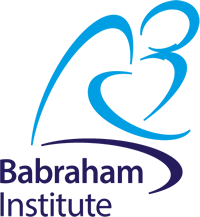Dr J Houseley
No more applications being accepted
Funded PhD Project (European/UK Students Only)
About the Project
(Please contact the Group Leader proposing this project directly BEFORE submitting your application to the University of Cambridge Graduate Portal to discuss possible funding options)
Evolution relies on the formation of novel mutations that impart beneficial phenotypes. Understanding mechanisms that give rise to adaptive mutations is critical for controlling rapid evolutionary processes with major impacts in medicine and biotechnology. For example, de novo mutation during tumour growth generates vast genetic and phenotypic heterogeneity, and this underlies the acquisition of drug resistance mutations that bedevil targeted chemotherapies. Similarly, evolution of industrial microorganisms during fermentation can reduce product formation and impair biofuel production.
Although it is generally assumed that mutations occur at random, and therefore that evolutionary processes are unavoidable, this is not exactly true. We have shown that yeast can gain resistance to environmental toxins by specific targeted gene amplification events, and work in bacteria has shown that genomes are often arranged such that certain genes more readily mutated.
Collisions between highly transcribed genes and DNA replication forks are a major source of mutations and genome rearrangements, and as gene expression is responsive to environmental change and stress it is easy to imagine how evolution of certain genes and genomic regions can be accentuated in particular situations. Conversely, cells possess an array of mechanisms to maintain genome stability, all of which can be regulated, hinting at a complex interplay between mutation rate and cellular responses to the environment.
Aim:
The aim of this project is to determine how gene expression responses to the environment act to reshape the genome and drive the occurrence of new adaptive mutations.
Objectives:
• Employ high-throughput sequencing to describe DNA replication fork status genome wide in yeast exposed to different environment
• Use reverse genetics to reveal key mechanisms causing localized replication fork defects and how these are impacted by environmental change and stress
• Assess genetic heterogeneity induced in cell populations by growth in different environments, exposure to stress and mutations that impair mechanisms of replication quality control
We have recently developed TrAEL-seq, a state-of-the-art genome-wide sequencing method to reveal replication fork stalling and damage. We will apply this method in yeast to understand how the replication machinery is impacted by collisions with highly expressed genes under both normal conditions and under environmental stress. Many systems maintain the stability of the replication fork both in general and in collision with RNA polymerases, and we will use reverse genetics to understand the mechanisms by which mutations are induced or prevented in certain situations.
To profile genetic change, we require methods capable of detecting rare genomic rearrangements, which is very difficult within a population. We have shown that extrachromosomal DNA circles (equivalent to double minutes in cancer cells) accumulate in aged cells, and that formation of these circular DNA molecules can also be driven by environmentally-responsive gene expression. Importantly, rare circular DNA can be detected within populations with very high sensitivity and we have developed a suite of sequencing methods for this purpose. We will therefore assess the heterogeneity of circular DNA in populations of cells ageing in specific environments as a way to understand the emergence of novel, potentially adaptive genetic heterogeneity.
References
Hull, R. M., et al. (2017). "Environmental change drives accelerated adaptation through stimulated copy number variation." PLoS Biol 15(6): e2001333.
Hull, R. M., et al. (2019). "Transcription-induced formation of extrachromosomal DNA during yeast ageing." PLoS Biol 17(12): e3000471.
Kara, N, et al. (2020) “Genome-wide analysis of DNA replication and double strand breaks by TrAEL-seq”, bioRxiv 243931

 Continue with Facebook
Continue with Facebook

